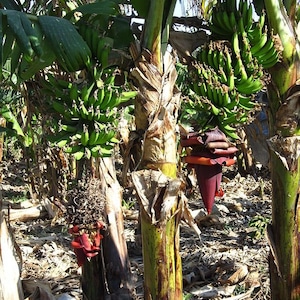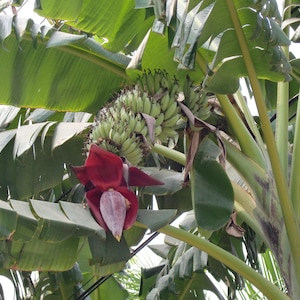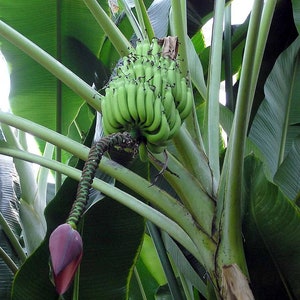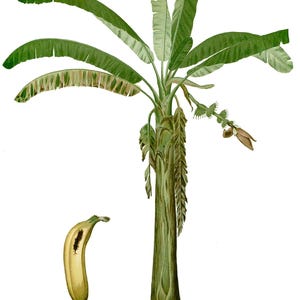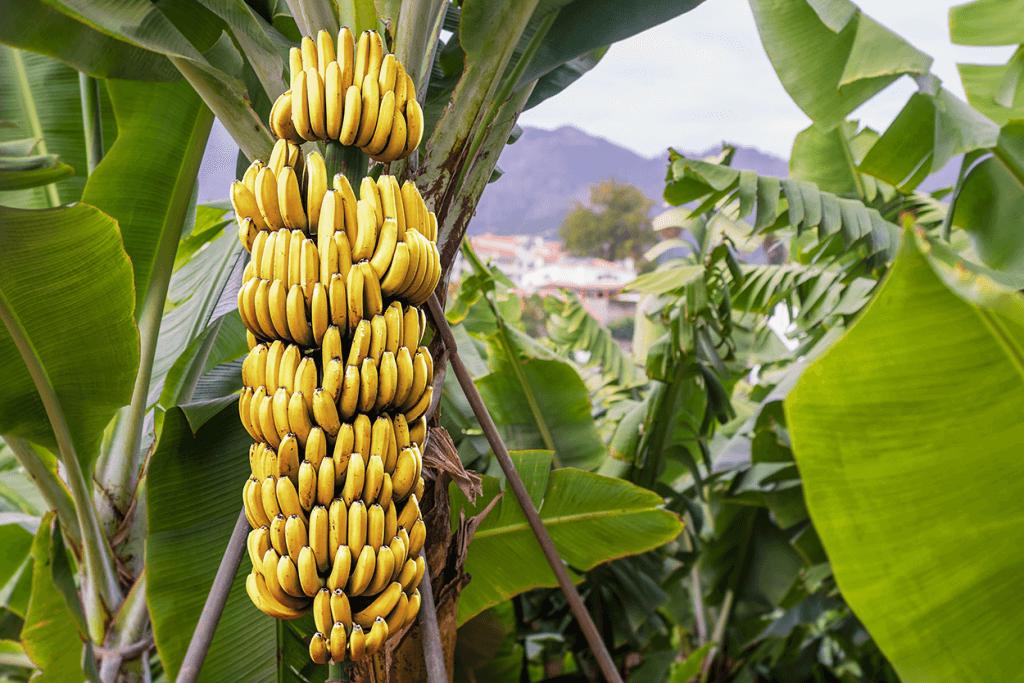
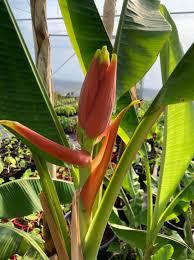
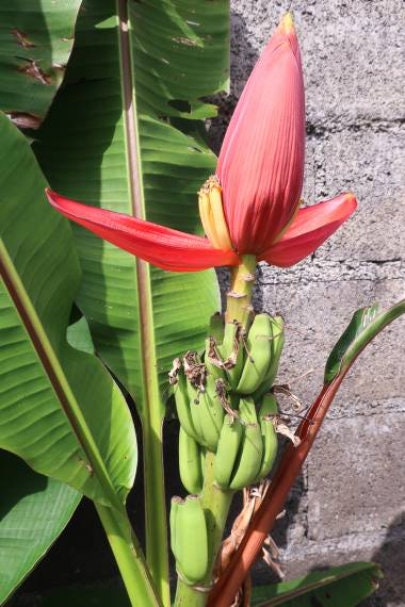
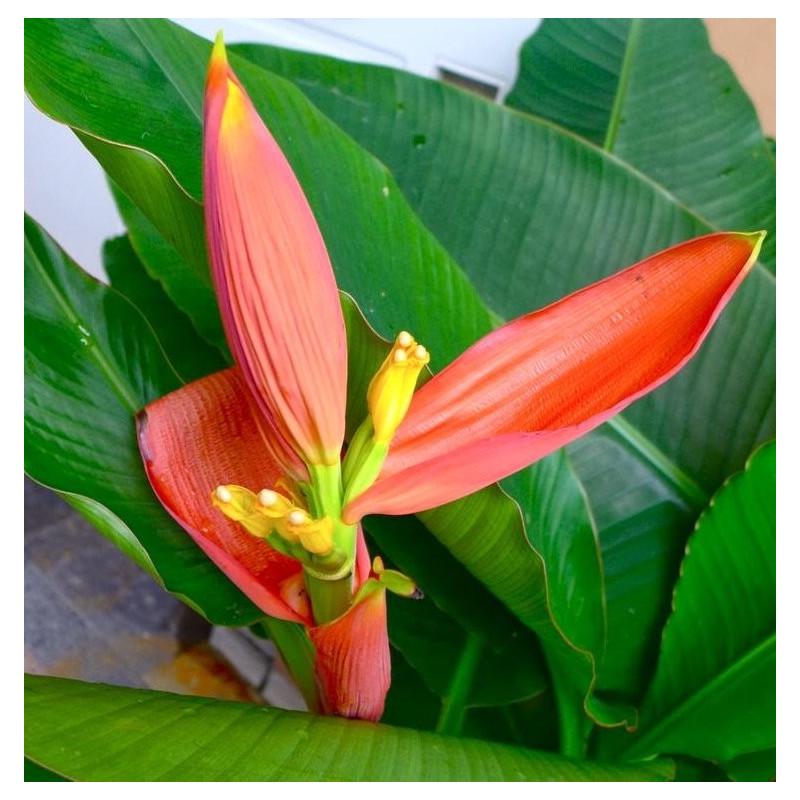
Bananier
Musa laterita, Banana tree seeds
$6.18 $8.23
-
DetailsSowing **Musa**, the banana tree, seeds can be a bit tricky, but with the right method and conditions, you can successfully germinate these seeds. Here's a step-by-step guide to sowing **Musa** seeds:
---
### **Materials required:**
- **Musa** seeds.
- Light and well-draining substrate (seedling compost, perlite, sand).
- Pots or seed trays.
- Spray bottle or watering can with a fine nozzle.
- Mini-greenhouse or plastic film (optional).
- Indirect light or horticultural lamp.
- Warm water to soak the seeds.
---
### **Steps for sowing Musa seeds:**
#### 1. **Seed preparation:**
- Banana seeds can be **very hard** and germination may be difficult without prior treatment. **Soaking the seeds in warm water** for **24 to 48 hours** before sowing can help soften the hard shell and speed germination.
- You can also **lightly scratch** the surface of the seeds with sandpaper or a knife to promote germination (this is a process called "scarification").
---
#### 2. **Choosing the time to sow:**
- The best time to sow **Musa** seeds is in **spring** or **summer**, when the ambient temperature is mild and stable.
- Banana seeds germinate best when the temperature is maintained between **25 and 30°C**.
---
#### 3. **Substrate preparation:**
- Use a light, well-draining substrate, such as a mix of **seedling soil** mixed with **perlite** or **sand**. This mix will keep the seeds well ventilated and prevent excess moisture.
- Fill pots or seed trays with this mixture and press down lightly.
---
#### 4. **Sowing the seeds:**
- **Sow the seeds on the surface** of the substrate, without covering them. **Musa** seeds must be in contact with the soil, but they must **remain visible** because they need light to germinate.
- If you have scarified the seeds, press gently to push them slightly into the substrate without covering them completely.
---
#### 5. **Germination conditions:**
- **Humidity:** Maintain a **constant humidity**. You can lightly spray the substrate with water to prevent it from drying out.
- **Temperature:** **Musa** seeds need warmth to germinate, so place the pots in a warm spot, at a temperature of around **25-30°C**. A **mini-greenhouse** or **plastic film** can be helpful to maintain this temperature.
- **Light:** The seeds need light to germinate, but avoid direct sunlight, as this can dry out the seeds. Place them in a bright location, but not in direct sunlight.
---
#### 6. **Germination time:**
- Banana seeds can take 3 to 6 weeks to germinate depending on heat, humidity, and light conditions. Be patient, as Musa seeds have a relatively long germination time.
---
### **Seedling Care:**
#### 1. **After germination:**
- Once seedlings appear, continue to maintain moderate humidity and warm temperatures to encourage rapid growth.
- Young **Musa** plants need **bright but indirect light**. If sowing indoors, use **grow lights** to supplement natural light.
#### 2. **Watering:**
- Water carefully, keeping the soil slightly moist but not soggy. Banana trees do not like to have their roots in standing water.
- Use a spray bottle to water young plants and avoid disturbing the fragile roots.
---
#### 3. **Transplanting the seedlings:**
- When the seedlings are about **10-15 cm tall** and strong enough, you can transplant them into larger pots or into the ground, if weather conditions permit.
- Handle the seedlings with care, as the roots are still fragile at this stage.
---
### **Transplanting into open ground:**
#### 1. **When to transplant:**
- You can plant young banana trees in the ground **when outdoor temperatures are stable and above 15°C**, and there is no longer any risk of frost. Ideally, wait until they are about 30 cm tall before transplanting them.
#### 2. **Location:**
- **Musa** prefers a location in **full sun**, but it can tolerate some light shade. The soil should be **well-drained**, rich in organic matter, and slightly acidic to neutral.
- If you live in an area with cold winters, you can grow the banana tree in a pot and bring it indoors during the winter to protect it from the cold.
---
### **Maintenance after planting:**
1. **Watering:**
- **Musa** likes moisture and requires **constantly moist** soil, but avoid overwatering, which can lead to root rot. Water regularly, especially during the growing season.
2. **Fertilization:**
- Apply a fertilizer rich in potassium and nitrogen during the growing season to encourage healthy growth and eventual flowering.
3. **Size:**
- The banana tree does not need regular pruning, but you can remove dead or damaged leaves to improve the appearance and health of the plant.
---
### **Additional Tips:**
- If you are growing banana trees indoors, make sure they have enough light and space to grow.
- Banana trees prefer warm temperatures and do not tolerate frost, so be sure to protect them if you are in a cold region. -
Shipping & Policies
Shipping from France
Processing time
1-2 business days
Customs and import taxes
Buyers are responsible for any customs and import taxes that may apply. I'm not responsible for delays due to customs.
Payment Options
Returns & Exchanges
I gladly accept returns and exchanges
Just contact me within: 14 days of delivery
Ship items back to me within: 30 days of delivery
I don't accept cancellations
But please contact me if you have any problems with your order.
The following items can't be returned or exchanged
Because of the nature of these items, unless they arrive damaged or defective, I can't accept returns for:
- Custom or personalized orders
- Perishable products (like food or flowers)
- Digital downloads
- Intimate items (for health/hygiene reasons)
Conditions of return
Buyers are responsible for return shipping costs. If the item is not returned in its original condition, the buyer is responsible for any loss in value.

